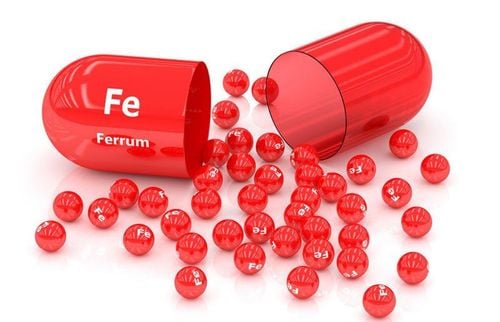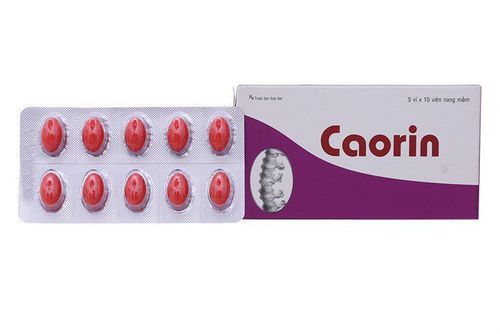This is an automatically translated article.
Mircera medicine has the main ingredient Methoxy polyethylene glycol-epoetin beta, a prefilled syringe containing a single dose in 0.3 ml of solution for injection. Before using Mircera, you should consult with your doctor for advice and instructions. Here is some information to help you understand how Mircera is used? When to prescribe medication?
1. What disease does Mircera treat?
Mircera is the first molecule of a new class of continuous activators of the erythropoietin receptor, also known as methoxy polyethylene glycol-epoetin beta. Currently, this drug is indicated for the treatment of patients with anemia due to chronic kidney disease (with or without hemodialysis).
2. Contraindications of the drug Mircera
Contraindicated to use Mircera drug in case:
The patient has a history of allergy to any ingredients, excipients in Mircera drug. People with uncontrolled high blood pressure. Children under 18
3. Dosage and how to use Mircera
How to use: Mircera is used by subcutaneous or intravenous injection. If injected under the skin, Mircera can be injected in places such as the arm, abdomen, or thigh.
Dosage:
Depending on the patient's condition, it is possible to decide to administer intravenous or subcutaneous injection to increase hemoglobin. However, do not exceed 12 g/dL (7.45 mmol/L). In case of non-dialysis patients: Administer 1.2 mcg/kg body weight subcutaneously once a month or 0.6 mcg/kg body weight every 2 weeks. Can be injected subcutaneously or intravenously. In case of patients on dialysis: Mircera 0.6 mcg/kg body weight intravenously or subcutaneously. Injection once every 2 weeks. If the patient is currently being treated with an erythropoiesis-stimulating agent, a single-dose intravenous or subcutaneous dose of Mircera once a month or every two weeks can be switched. The patient's hemoglobin should be monitored every 2 weeks until stable, then periodically. After 1 month of treatment, the dose of Mircera can be adjusted based on the results of the individual patient's hemoglobin level monitoring. No adjustment of the starting dose of Mircera is required in patients with hepatic impairment and in the elderly (>65 years). Note: Mircera dosage above is for reference only. The specific dose of Mircera depends on the condition and the progression of the disease. To get the right dose of Mircera, patients should consult their doctor or healthcare professional.
How to handle missed dose, overdose Mircera:
In case of missed dose of Mircera, it is recommended to supplement as soon as possible. However, if it is almost time for the next dose, skip the missed dose of Mircera and use a new dose. An overdose of Mircera may result in the manifestation of an excessive pharmacodynamic effect (eg, excessive erythropoiesis). Patients need to stop the drug immediately and go to the nearest medical facility for timely treatment.
4. Side effects of the drug Mircera
Possible side effects when using Mircera include:
Common: High blood pressure. Uncommon: Headache, vascular thrombosis. Rare: Hypersensitivity, hypertensive encephalopathy, hot flushes, rash, maculopapularity, thrombocytopenia, pure red blood cell aplasia, anaphylactic reaction, thrombosis, pulmonary embolism, Stevens syndrome -Johnson and toxic epidermal necrolysis. This is not a complete list of Mircera 100mcg side effects. You may still experience other side effects while taking the drug. Therefore, tell your doctor or pharmacist if you experience any unusual symptoms after taking Mircera.
5. Precautions and warnings when taking Mircera
Considerations should be given before increasing the dose of Mircera in patients with chronic renal failure. This is because Mircera accumulates high levels of epoetin, which may be associated with an increased risk of death, cardiovascular events, and serious cerebrovascular accidents. Misuse of Mircera in healthy adults can cause excessive hemoglobin levels and lead to potentially life-threatening cardiovascular complications. During treatment with Mircera, you should have adequate blood pressure control. If elevated blood pressure is difficult to control with medication or dietary regimens, consider reducing the dose or discontinuing Mircera. Mircera should be used with caution in patients with severe liver disease, hemoglobinopathy, epilepsy, or with a platelet count higher than 500×109/l. Women who are pregnant or breast-feeding should consult a specialist if they want to use Mircera. Store Mircera in the refrigerator, at a temperature of 2 – 8°C. Be careful not to freeze the medicine. Keep the prefilled syringe in the carton to protect from light. You can take the prefilled syringe with Mircera out of the refrigerator and store it at room temperature (no more than 30°C), but make sure it's used up within 1 month. Keep Mircera out of the reach of children. The article has provided information about what medicine Mircera treats, dosage and notes when using. To ensure safety for your health and maximize the effectiveness of your treatment, you need to take Mircera exactly as directed by your doctor.
Please dial HOTLINE for more information or register for an appointment HERE. Download MyVinmec app to make appointments faster and to manage your bookings easily.













